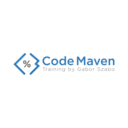Linux Basics for Power Users
This, along with the other courses can be given either on-site in the offices of the client or on-line via Zoom or other means. Contact Gabor Szabo for more details.
Goals
- Understand and use the Linux/Unix terminal in effective way
- Be comfortable with most of the command line tools available in Linux/Unix
- Learn using Bash to make the daily work efficient
Audience
- The course is intended for technical personnel who need to use the Linux/Unix terminal on a daily basis, in an effective manner.
Prerequisites
- Basic familiarity with MS Windows or Mac OSX.
- Experience with a text editor like notepad, emacs, vi, or pico.
- Basic understanding of files and directories.
Course format
- Duration of the course is 16 academic hours. (Usually 2 days or 4 half-days).
- The course includes approximately 40% hands on lab work.
Syllabus
Introduction
- What is Unix and Linux?
- Unix and Linux, a brief history
- Philosophy - Open Source, Free Software, Freware, Propriatery Software
- Open Source Licenses - GNU GPL, BSD and in between
- Linux distributions (Fedora, RedHat, CentOS, Debiam, Ubuntu etc.)
Linux as Desktop
- Login/Logout/Reboot
- Gnome/KDE desktop environment
- Installing programs, package management system
- Basic maintenance - installing security upgrades
- Overview of a few selected desktop applications
- e-mail, web browsing, word processor, spreadsheet, file system browser
- Opening the Terminal
Setting up your Linux Shell
- Accessing Linux from another computer (telnet, ssh, putty)
- Environmental variables
- PATH, path
- Customizing the prompt
The Bourne Again Shell (Bash)
- Starting a Bash shell
- The history facility
- Command line editing
- Aliases
- Job control
Writing Scripts with Bash
- Executing Commands in a Bash Script
- Variables
- Running the Script
- Arithmetic operators
- Logical operators & Conditionals
- Control Statements
- Loops
Findig Files
- find, locate, whereis
- Wildcard (glob) patterns
Searching Through Files
- grep et. al.
- awk
- sed
- Finding text in binaries
- Piping and redirection
Regular Expressions
- Pattern Syntax
- Remembering Patterns
- Metacharacters
- Examples
Working with Files
- Basic vi
- Utilities such as cut, paste, sort, uniq, head, tail, wc
- Comparing files with cmp, diff, patch
File Permissions and Ownership
- Permissions
- Owners (users and groups)
- chown, chmod, newgrp, id
File System Basics
- File System Hierarchy
- Hard and Symbolic Links
- i-nodes, ls, stat
- du, df, mount
- tar, gzip, sha1sum
Processes
- What's a process?
- Process states
- Foreground, Background, suspended
- Sending Signals using kill, pkill
- Monitoring Processes with top, htop, ps, pgrep
Resources
If you are interested in this course, contact Gabor Szabo for more details.
